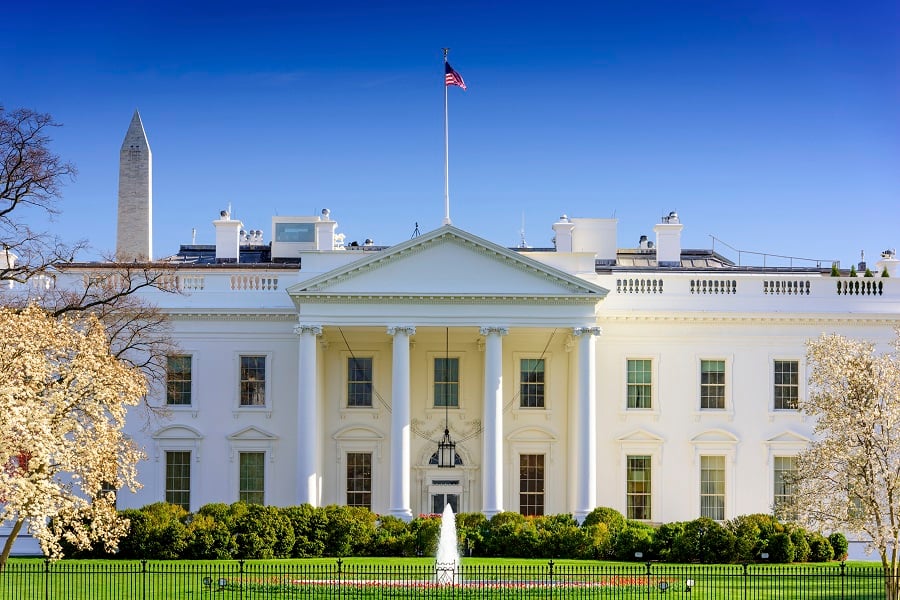

Federal employees would see reductions in their retirement benefits under the White House’s proposed budget, a development that could lead them to stay in the workforce longer.
On Monday, President Donald J. Trump unveiled his vision for the country’s fiscal year 2021 budget, which includes more than $92 billion in savings by 2030 achieved by cutting retirement benefits for federal workers. The cuts to the Federal Employees Retirement System, the defined-benefit portion of the system, include lower cost-of-living adjustments and higher contributions from employees to their pensions.
The government would also save money by basing annuity calculations on each eligible employee's five highest-salary years, versus the current calculation based on three years. Additionally, the Trump administration would do away with the “special retirement supplement” that allows federal retirees to receive “bridge” payments before they can claim Social Security at age 62.
The government would also lower the interest rate paid on the G Fund, a short-term Treasury fund within the Thrift Savings Plan, which is a defined-contribution plan. The change alone would account for $10.5 billion in budget savings by 2030. The reduction would likely lower the rate on the G Fund from its current 2% level to under 1%, which is closer to the market rate, said Olivia Mitchell, a professor at the University of Pennsylvania's Wharton School and the executive director of the Pension Research Council.
The proposed changes would bring the benefits provided to federal workers in line with private-sector pensions, Ms. Mitchell said in an email.
“Some employees may try to save more to offset the changes,” she said. “Nevertheless, many of the changes are likely to induce delayed retirement.”
If the proposed cuts in the government’s contributions to those retirement accounts pass, one thing is certain – many federal workers would benefit from more financial education and advice. But it's unclear how advisers would reach them. Because the Thrift Savings Plan is designed so well, federal workers have little incentive to invest any of their assets in the private savings system, academics say.
The problem is that most federal workers probably wouldn't boost their overall savings rate.
“When you have people contributing more to their defined-benefit plan, they’re definitely going to contribute less to everything else,” said Geoffrey Sanzenbacher, associate professor at Boston College and research fellow at the Center for Retirement Research. “People react to what they see coming out of their paycheck, not to what they are saving for retirement in total.”
Workers would likely reduce their contributions to the Thrift Savings Plan to offset the higher contributions to their pensions, he said.
The message those workers would need to get from financial planners is “you’re contributing more to your pensions, but you don’t have a more generous pension – so you need to contribute somewhere else,” Mr. Sanzenbacher said.
It's unlikely that many would consider IRAs, he said.
“The rational response would be to save more,” said Dmitriy Stolyarov, associate professor of economics at the University of Michigan. But, “if anything, this change is going to pull money away from the TSP, because people are not going to have as much disposable income.”
The Federal Employees Retirement System initially required employee contributions of 0.8% for those hired after 1984, while the government made contributions of nearly 12%, Mr. Stolyarov said. Since then, the government has gradually bumped up the mandatory employee contributions, which rose above 4% for people hired in 2013 or later, he said.
Combined with Social Security and the TSP, the retirement benefits are generous – the government spends about 26 cents per dollar of compensation, he said. “That’s a lot.”
The proposed White House budget targets the retirement benefits because of their richness compared to those generally offered to private-sector workers.
“Most recently, in 2017, CBO found a 17% disparity on average in total compensation between federal employees and their private sector peers … overwhelmingly attributable to benefits,” the White House said in an addendum to the proposed budget.
But comparing compensation between private and public-sector workers “is a very complicated question,” in part because of the ability that private-sector workers have to select their jobs and fields for themselves, Mr. Stolyarov said. “I would be pessimistic about obtaining a good answer to that.”

Integrated Partners is adding a mother-son tandem to its network in Missouri as Kestra onboards a father-son advisor duo from UBS.

Futures indicate stocks will build on Tuesday's rally.

Cost of living still tops concerns about negative impacts on personal finances

Financial advisors remain vital allies even as DIY investing grows

A trade deal would mean significant cut in tariffs but 'it wont be zero'.
RIAs face rising regulatory pressure in 2025. Forward-looking firms are responding with embedded technology, not more paperwork.
As inheritances are set to reshape client portfolios and next-gen heirs demand digital-first experiences, firms are retooling their wealth tech stacks and succession models in real time.
